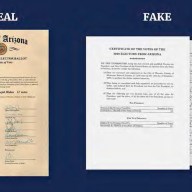Helping the environment is a worthy thing, but does it make business sense?
When you think long-term as a business, sustainability is something that’s not just a responsibility, but also something that will reduce the risks we have. If you incorporate some risks that environmental degradation can have on your supply chain, and ultimately on your product delivery, the environment is something you have to consider. It’s also an opportunity for businesses, not just as potential profit but also as a chance to innovate; it’s an opportunity for businesses to catch changing consumer attitudes.
The man on the street knows monetary profit and loss, but how does environmental profit and loss work?
Let’s look at EP&L (eds: environmental profit and loss sheet) at Puma. We’ve taken our carbon and water footprint, our pollution and land use, and put a monetary value on them. Through their value we can say, “If nature were charging us for those services and the impact Puma has through the supply chain, it would be 146 million euros per year.” That gives us a number to work with, allowing us to say, “Ok, we know where our environmental impact is. Which new technologies and products can we use to get rid of this footprint?”
Your job is to make sure Puma’s EP&L is a plus, not a minus for business. How do you do that?
Today it’s negative, as it is for most businesses. If you look at solar companies, making solar panels consumes energy, too, though their net impact will be positive because they use the panels to create renewable energy. But if you use a traditional system of soil to produce cotton, you realize the need for new materials to reduce your footprint and bring renewable energy into your supply chain. When you offset your footprint, you get something positive in return.
Puma is a consumer product company. Isn’t consumption the problem?
We need to look at how we consume. Consumption doesn’t have to be negative, but we have to change its patterns and the way we produce our products – how they’re designed and made. If businesses don’t do anything, 10 years from now the resources will be very scarce.
How green is Puma right now?
We don’t produce raw materials and don’t have our own factories, but as a responsible company you have to look at the whole supply chain. Our own footprint out of the 146 million euros is only eight million, so only a small percentage of Puma’s footprint is generated by us, and we’re a big company with 10,000 staff. That’s a surprise in terms of EP&L: the biggest impact happens the farthest away from our influence.
What specifically needs to be done?
We have to look at a replacement for fossil fuels that’s sustainably harvested or produced so that the environmental impact is significantly reduced. That’s something that will happen over time, not overnight.
When did the environment become so important for you?
I’ve always been concerned about Mother Nature but as a business leader I gained awareness
about the many ways businesses can move things in a positive direction. I realized that it was MY responsibility, not a responsibility that I could leave to governments. As a powerful brand you can change things in a way that goes beyond your business.
You’re a globetrotting businessman. How do you minimize your personal footprint?
Sadly, travel is still a key part of my business life, as well as my private one. But I try to reduce my impact with my own EP&L: my farm in Kenya, where my foundation works on conservancy towards the region’s environment, and its culture and agriculture. It’s what I call the four Cs: Conservation,
Community, Culture and Commerce.
















